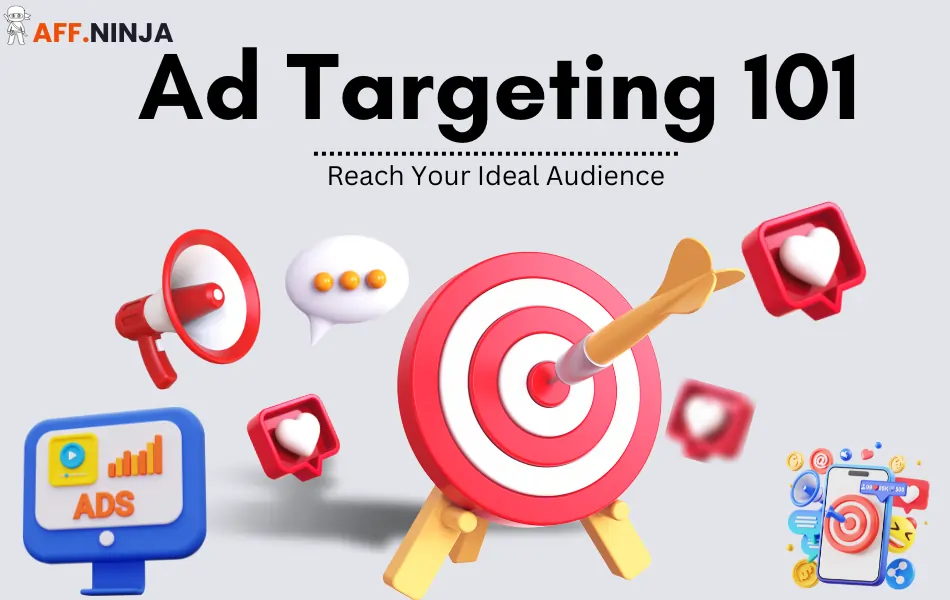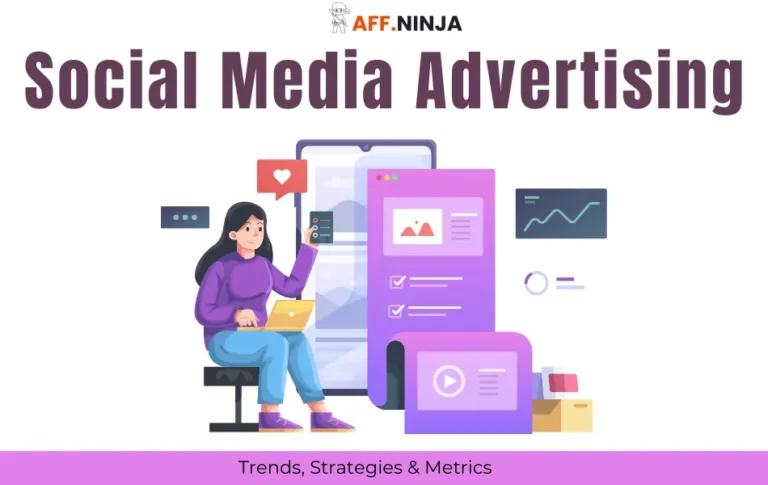
Ever wonder why that pair of shoes you browsed online keeps popping up in ads everywhere you go? Well, that is something happening because of Ad Targeting.
We can call the ad targeting feature your assistant that knows everything, your tastes, your likes, and serves up ads made just for you.
In the current scenario, advertisers have become pretty savvy regarding what clicks your preferences. They're using all sorts of clever tricks to get our attention and, hopefully, our business. But how exactly does this work? And is it a little creepy, or just really smart marketing?
Well, we'll cover every question that might pop up in your head. Now, without any further adieu, let's begin the exploration.
What is Ad Targeting?
Ad targeting, also known as targeted advertising, is a method used by marketers to deliver ads tailored to the specific traits, interests, and behaviors of consumers. With the help of data such as demographics, browsing history, and purchasing habits, advertisers can segment audiences and create personalized ads that resonate with each segment.
Types Of Ad Targeting
Ad targeting can be categorized into several types, each leveraging different data and strategies to reach specific audiences. Here are some common types:
Behavioral and Interest Targeting
Behavioral and interest targeting lets you reach specific groups based on what they do online and offline. This means you can show ads to people who are more likely to care about your stuff.
Social Media Behavioral Targeting
Platforms like Facebook and Instagram have some pretty nifty tools for this. They look at what people do—like what posts they interact with, what they like, share, and comment on—to help you create ads that hit the mark.
Here's how you can slice and dice your audience:
- Interests: What pages they like, what content they engage with, and their general online habits.
- Behavior: What they’ve bought before, what devices they use, and other online activities.
- Demographics: Age, gender, where they live, and more.
Check out this table for some examples:
| Platform | Targeting Criteria | Example |
|---|---|---|
| Facebook Ads Manager | Interests | People who like fitness pages |
| Instagram Ads Manager | Behavior | Folks who shop online a lot |
| Twitter Ads | Demographics | 25-34-year-olds in New York |
Want more on social media ads? Head over to our social media advertising article.
Google Channels for Behavioral Targeting
Google's got a few tricks up its sleeve too, like the Google Display Network, Google Remarketing, and YouTube. These let you target people based on what they do online.
Google Display Network
With the Google Display Network (GDN), you can put your ads on tons of websites and apps. You can target people based on:
- Interests: Folks who visit sites about certain topics.
- Remarketing: People who’ve been to your site before.
- Demographics: Age, gender, if they’re parents, and more.
Google Remarketing
Google Remarketing is all about getting back in front of people who’ve already checked out your site or app. It’s a great way to remind them about your brand and nudge them to take action.
YouTube Ad Targeting
YouTube lets you target based on what videos people watch and interact with. You can aim your ads at:
- Interests: People who watch certain types of videos.
- Demographics: Age, gender, location, and more.
- Behavior: Folks who engage with specific content.
Here's another table to break it down:
| Channel | Targeting Criteria | Example |
|---|---|---|
| Google Display Network | Interests | People visiting tech blogs |
| Google Remarketing | Behavior | Shoppers who left items in their cart |
| YouTube | Interests | Viewers of fitness tutorials |
Contextual Targeting
Contextual targeting is an advertising strategy that places ads on web pages relevant to the content being viewed. This method ensures that ads are shown to users who are already interested in the topic, making the ads more effective and engaging. Here's how it works:
Site Targeting
Site targeting is a digital advertising strategy that allows marketers to display ads on specific websites or web pages that align with their target audience. This method ensures that ads are placed in environments where the audience is most likely to engage with them. Here’s how it works:
A footwear brand might use site targeting to display ads on popular fashion blogs and online magazines. For instance, if a user visits a fashion blog to read about the latest trends, they might see an ad for the same brand’s new shoe collection, increasing the likelihood of conversion due to the relevant context.
Predictive Targeting
Predictive targeting utilizes artificial intelligence, machine learning, and vast amounts of user data to anticipate future customer behaviors and preferences. With the analysis of the patterns in past behaviors, predictive targeting can deliver highly personalized ads to users who are most likely to convert. This method not only enhances ad relevance but also optimizes marketing spend by focusing efforts on the most promising prospects.
For Example, an online retailer might use predictive targeting to show ads for winter coats to users who have previously searched for cold-weather gear, increasing the likelihood of a purchase.

Semrush
Semrush is a powerful digital marketing tool that offers comprehensive solutions for SEO, PPC, content marketing, and social media management. It excels in keyword research, competitor analysis, and site audits, helping marketers optimize their strategies and improve online visibility.
What People Want in Ad Targeting?
People have strong opinions about how ads find them. A Harvard Business Review study found that folks really dislike:
- Ads using info from other websites, not the one they're on.
- Ads guessing personal stuff (like pregnancy) without being told.
To make people less annoyed with targeted ads, marketers should:
- Be smart with data.
- Let people control their info.
- Skip the creepy tactics mentioned above.
Stick to these rules, and you'll make ads that people don't mind seeing. Want more tips? Check out our guide on ad placement techniques.
Why Data Privacy Matters in Ad Targeting?
Keeping data private is a big deal for marketers. It helps brands advertise well without stepping on toes. According to Improvado, companies that get consent to use data see better results.
Marketers can stay on the right side of the law by:
- Getting permission to use data.
- Regularly cleaning up email lists.
- Using data management tools.
- Being ethical and clear about how they use data.
Messing up data privacy can cost a lot. In the US, breaking the GLBA rules can mean fines up to $100,000 per offense. In the EU, messing up GDPR rules can cost up to 20 million euros or 4% of last year's global revenue.
To avoid trouble and make ad targeting work better, marketers should look at industry standards and past data. Checking out old campaign data helps see what works and what doesn't in programmatic advertising.
For more tips on making ad campaigns work, see our sections on ad campaign optimization.
How to Upscale Your Ad Targeting?
Upscaling your ad targeting involves refining your strategies to reach the most relevant audience effectively. Here are some key steps to enhance your ad targeting:
- Use First-Party Data: Utilize data from your website to gain insights into user behavior and preferences. Tools like Google Analytics can help track user journeys and demographics.
- Get Granular: Regularly monitor and optimize your ad campaigns by splitting delivery by location, audience, persona, ad group, or keywords. This detailed targeting ensures your ads are performing well.
- Focus on KPIs: Understand and track key performance indicators (KPIs) that align with your campaign objectives. This helps in measuring what’s working and what needs adjustment.
Common Queries Related to Ad Targeting
Why is Ad Targeting Important?
It increases ad relevance, improves engagement, and boosts conversion rates by reaching the right audience with the right message.
How does Contextual Targeting Work?
Contextual targeting places ads on web pages relevant to the content being viewed, using keywords and categories.
How does Predictive Targeting Enhance Ad Campaigns?
Predictive targeting uses AI and machine learning to anticipate future customer behaviors, delivering highly personalized ads.
How Can Transparency Improve Ad Targeting?
Being transparent about data usage and allowing users to control their information can reduce ad intrusiveness and build trust.
What are the Main Types of Ad Targeting?
Common types include behavioral targeting, contextual targeting, search retargeting, site retargeting, and predictive targeting.
Bashing Marketing Goals
So, here we are done with covering almost every aspect of ad targeting. It is pretty clear how ad targeting can transform how businesses connect with their audience. With the help of different targeting methods and respecting data privacy, marketers can create ads that not only capture attention but also build trust.
From behavioral targeting to all way to predictive targeting, we need to get along with almost every important aspect that might help you become a pro-level marketer.
Well, just in case you want to learn more about advertising and media buying, check out our articles on PPI Advertising, Ad Campaign Reporting, and Ad Placement Techniques.
Now go on and wreck those marketing goals you have!







